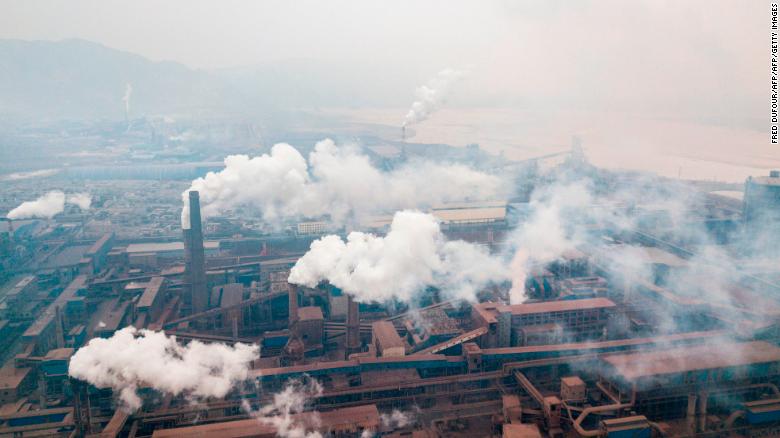22 of the top 30 most polluted cities in the world are in India

NEW DELHI, (DNA) – India accounts for seven of the world’s 10 cities with the worst air pollution, according to a new report, but previously smogbound Chinese cities have seen a marked improvement.
Gurugram, a suburb of the Indian capital New Delhi, is the world’s most polluted city, according to Greenpeace and AirVisual, which found it had an average air quality index of 135.8 in 2018 — almost three times the level which the US Environmental Protection Agency regards as healthy.
In two months of last year, the AQI in Gurugram — as measured by levels of fine particulate matter known as PM 2.5 — was above 200. The EPA regards this as “very unhealthy” and warns that “everyone may experience more serious health effects” if exposed.
According to the report, air pollution will cause around 7 million premature deaths globally next year and have a major economic impact.
“Air pollution steals our livelihoods and our futures,” said Yeb Sano, executive director of Greenpeace Southeast Asia. “In addition to human lives lost, there’s an estimated global cost of 225 billion dollars in lost labor, and trillions in medical costs. This has enormous impacts, on our health and on our wallets.”
The problem is particularly pronounced in South Asia. Eighteen of the world’s top 20 most polluted cities are in India, Pakistan or Bangladesh, including the major population centers of Lahore, Delhi and Dhaka, which placed 10th, 11th and 17th respectively last year.
Climate change “is making the effects of air pollution worse by changing atmospheric conditions and amplifying forest fires,” the report said, while noting that the key driver of global warming, burning fossil fuels, is also a major cause of dirty air.
“What is clear is that the common culprit across the globe is the burning of fossil fuels — coal, oil and gas — worsened by the cutting down of our forests,” Sano said.
“What we need to see is our leaders thinking seriously about our health and the climate by looking at a fair transition out of fossil fuels while telling us clearly the level of our air quality, so that steps can be taken to tackle this health and climate crisis.”
While South Asian countries, along with China, are the worst affected, air pollution is a global issue.
Of the 3,000 cities measured in the report, 64% exceeded the World Health Organization’s annual exposure guidelines for PM2.5.
PM2.5 includes pollutants such as sulfate, nitrates and black carbon, which can sneak deep into the lungs and cardiovascular system. Exposure to such particles has been linked to lung and heart disorders, and can impair cognitive and immune functions.
Every single city included in the report in the Middle East and Africa exceeded WHO guidelines for PM2.5, as did 99% of cities in South Asia, 95% in Southeast Asia, and 89% in East Asia.
“As many areas lack up-to-date public air quality information and are for this reason not represented in this report, the total number of cities exceeding the WHO PM2.5 threshold is expected to be far higher,” the report warned.
One bright spot was China, once the world’s poster child for urban air pollution. The report found that average concentrations of pollutants fell in Chinese cities by 12% from 2017 to 2018, while the capital Beijing has fallen out of the top 100 most polluted cities following concerted efforts to get air pollution under control.
While China saw improvement, however, many neighboring countries suffered major increases in pollution, including in Indonesia, South Korea, Vietnam and Thailand.
In January, authorities in Bangkok deployed planes with special rainmaking capabilities — a technique known as cloud seeding — to relieve persistent pollution in the Thai capital. In the same month, cities across South Korea, China and India reported major spikes in air pollution, as winter fuel burning contributed to the smog blanketing the region.
« US closes Jerusalem consulate, demoting Palestinian mission (Previous News)
Related News

Bulgaria readies to adopt the euro, nearly 20 years after joining EU
SOFIA, DEC 31: Bulgaria was preparing to switch to the euro on Wednesday night toRead More

More than 3,000 migrants died while trying to reach Spain
DNA MADRID: More than 3,000 migrants died while trying to reach Spain this year, aRead More


Comments are Closed